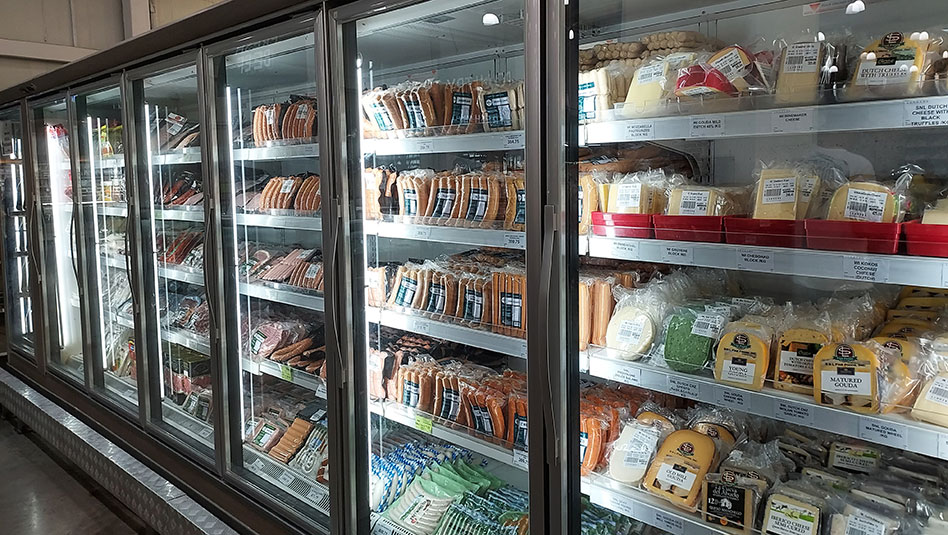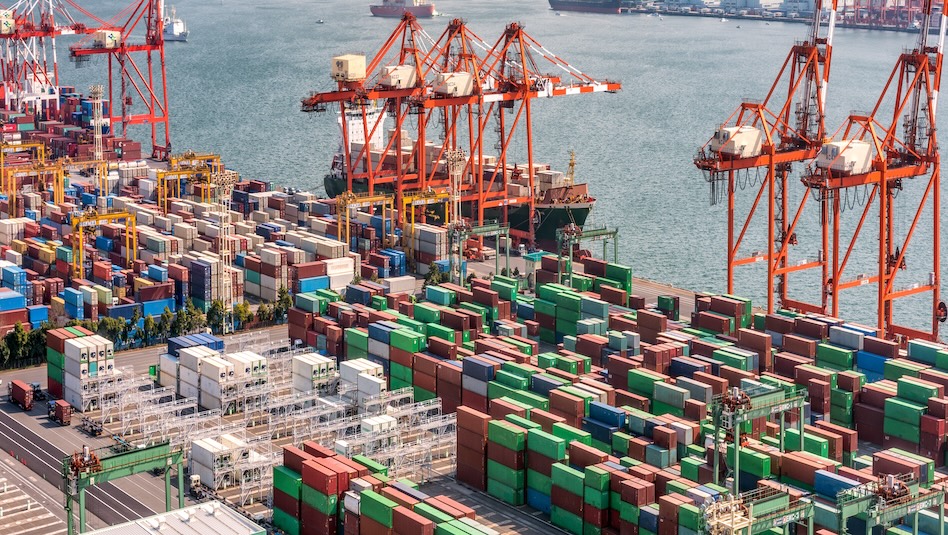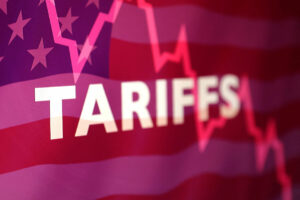




Monthly Economic Update: One for the road
 DOWNLOAD
DOWNLOAD

Inflation Update: Still low, still slow
 DOWNLOAD
DOWNLOAD

Philippines Trade Update: Exports momentum continues
 DOWNLOAD
DOWNLOAD


US tariffs to dampen Philippine electronics export growth

The Semiconductor and Electronics Industries in the Philippines Foundation, Inc. (SEIPI) expects the 20% US tariff to dampen its optimistic projections this year.
SEIPI President Danilo C. Lachica said the group initially projected a flat growth to about USD 42.6 billion this year.
“But we have seen some upticks and that caused some optimism. In fact, personally, I thought we might hit the 2023 levels of USD 46 billion,” he said in an interview on Money Talks with Cathy Yang on One News.
“But, you know, these tariff developments have been disappointing, and that might temper our optimistic projections,” he added.
Despite the challenges, Mr. Lachica said he still expects a modest increase compared to the earlier export projection of USD 42.6 billion.
“Well, I’m an optimist, so I hope we’ll see some modest increase in that, but that remains to be seen. We’ll just pray for it and hope for successful negotiations,” he added.
Last week, US President Donald J. Trump imposed a 20% tariff on Philippine-made goods entering the US starting Aug. 1, higher than the 17% previously announced.
The new rate is the same as the rate on Vietnam, which secured a deal with the US.
Mr. Lachica said that the 20% rate is “disappointing” considering that the reciprocal tariffs were placed to minimize the US trade deficit.
“If you look at the trade deficit of the Philippines, which is about USD 6 to USD 8 billion, it is much, much less than Vietnam’s trade surplus,” he said.
“We’re probably 20 times less, and so it was really a surprising development to see that we’ve been bumped up to 20% and Vietnam lowered to 20%. So that creates major concerns,” he added.
Mr. Lachica said the previously announced 17% tariff gave the Philippines a competitive advantage over Vietnam which had a 46% tariff.
“And now we’re at the same level. And Vietnam is one of our biggest competitors, if you will, in terms of attracting foreign direct investments and even exports,” he said.
Despite the uncertainty, Mr. Lachica said some optimism remains for electronics and semiconductors’ export growth.
“We have seen some increasing demands in the automotive and, of course, data and artificial intelligence market storage devices,” he said.
In the first five months, exports of electronic products inched up by 0.9% to USD 17.799 billion from USD 17.641 billion in the same period last year. In May alone, it grew 8% to USD 3.846 billion, up from USD 3.561 billion a year ago.
“But again, this will be tempered by the developments. [So], I am glad that, as Trade Secretary Cristina A. Roque mentioned, we will be sending a ‘renegotiate team,’ as I call it. The presence of the President will be very helpful,” said Mr. Lachica.
A Philippine delegation including Ms. Roque and Special Assistant to the President for Investment and Economic Affairs Frederick D. Go will be in Washington this week to negotiate for a lower tariff.
President Ferdinand R. Marcos, Jr. will also be heading to the US for an official visit from July 20 to 22.
Mr. Lachica said that he is hopeful that a free trade agreement (FTA) will be discussed during the negotiations.
“Because today, without any FTA, whether unilateral or bilateral, we cannot supply the federal government projects. So that is impacting our electronics manufacturing services (EMS) industry,” he said.
In particular, he said that the delegation should highlight the advantages of the Philippines, and how this benefits the US.
“For example, the business process outsourcing industry provides a lot of services to US multinationals, and in our semiconductor industry we have a lot of US multinationals here,” he said.
Mr. Lachica said he also hopes that the US will not change policies stated under Section 232 of the 1962 Trade Expansion Act of the US, which currently exempts some of the sector’s exports, including integrated circuits.
“It’s decades old, but that was the reason we still enjoy some exemptions in the semiconductor space. And I just hope that that does not change, and we just need to take advantage of that,” he said.
He also expressed hopes for the tariff discussions this week to result in lower tariffs for EMS products.
“We are at the crossroads, and part of what we need to do really is to look at the supply chain and the product mix we have in the Philippines compared to Vietnam,” he said.
“In fact, we are talking to the Department of Trade and Industry and to the American Chambers to drill down the products of semiconductors and EMS to see whether we could get leverage or position ourselves to take advantage of those differences in terms of tariff rates for the line items,” he added.
Meanwhile, Mr. Lachica said the Corporate Recovery and Tax Incentives for Enterprises to Maximize Opportunities for Reinvigorating the Economy Act is helping boost investor confidence in the Philippines.
“We’re seeing some foreign direct investments for electronics companies, but hopefully we will see an increase in that,” he said.
“In terms of inquiries, we’ve seen a lot. Interestingly enough, even the People’s Republic of China has come to the state office to investigate how they can promote investments moving out of China to the Philippines,” he added.
Room to negotiate
Meanwhile, emerging Asia, including the Philippines, are still positioned to negotiate with the US for lower tariff rates, Pantheon Macroeconomics said.
“Our baseline scenario is that the planned ‘reciprocal’ tariffs on emerging Asia (ex-China) will eventually be softened,” it said in a report on Monday.
“If Vietnam, which boasts the biggest trade surplus with the US in the region, can strike a deal, however fragile, to reduce its ‘reciprocal’ rate to 20% from the egregious 46% proposed initially, then its neighbors should be able to do so too, especially as we still see no appetite for any retaliation.”
Pantheon also noted that most of Mr. Trump’s tariff notices indicated an openness for negotiation.
For example, the Philippines’ letter said the US may consider adjusting the tariff rate if the country opens its closed trading markets and eliminates trade barriers. The tariff rates can be “modified upward or downward,” depending on the steps moving forward.
Countries like the Philippines and Indonesia are expected to not be as impacted by the levies compared to its export-oriented neighbors, Pantheon said.
“That said, among the many likely losers should be some countries that will feel less of a pinch — if any — as they barely rode the front-running wave.”
“In particular, Indonesian and Philippine exports to the US in January to May are up a relatively modest 5% against their long-term uptrend, while Singapore’s have fallen 16%, if we exclude the port city’s unsurprisingly high level of re-exports.”
The United States is the Philippines’ top destination of Philippine-made goods. The latest data from the local statistics authority showed that 15.3% of exports went to the US in May.
“In the long run, we continue to believe that the broad contours of President Trump’s global tariff salvoes probably will improve the export manufacturing prospects of emerging market Asia — at China’s expense — as the region is being given a trade tax advantage it didn’t have just a few months ago,” it added.
Pantheon cited US Secretary of State Marco Rubio’s comments to the press last week, where he noted that many Southeast Asian economies are likely going to have tariffs “better than countries in other parts of the world.”
On the other hand, the tariff uncertainty is more likely to affect export-heavy economies through “near-term investment paralysis.”
“Looking further down the line in this half of 2025, a sharp correction in exports is looking increasingly inevitable, even if the US’ final reciprocal tariffs are rolled back substantially, as the front-loading in shipments enjoyed through the first half naturally unwinds.” — Justine Irish D. Tabile and Luisa Maria Jacinta C. Jocson
This article originally appeared on bworldonline.com





 By BusinessWorld
By BusinessWorld